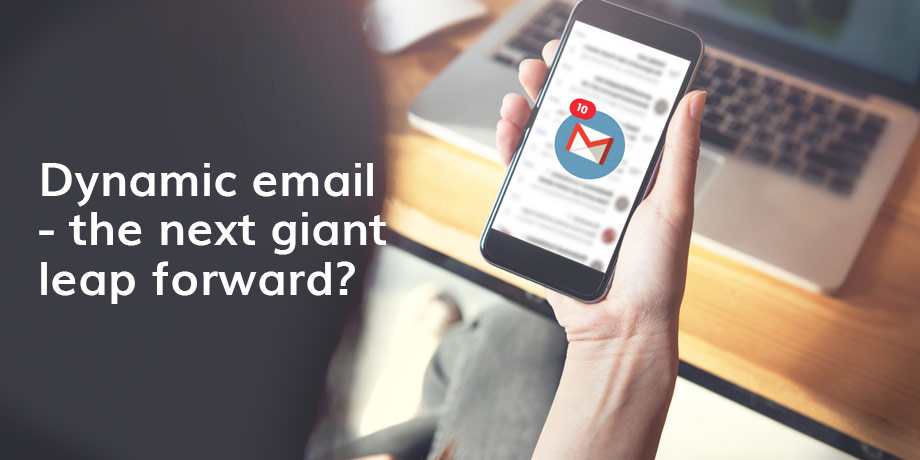
Google has announced an exciting step forward for digital customer experience – the ability for Gmail users to see dynamic content inside emails (initially limited to the Gmail web interface).
What is dynamic email content, you ask?
If you imagine email as a static snapshot of content at the point in time that it was created – then dynamic content enables the recipient to view “dynamically updated” information from within the original email.
Take for example a developing news story – the original news release is sent out by email. A couple hours later, new information is uncovered. Instead of sending another email with the update, the news publication can add an update to the original email.
This new capability also promises to enable organisations to add sparkle and efficiency to their emails.
On their blog, Google gives a couple of examples of brands such as Pinterest and Booking.com who have implemented dynamic content during the beta stage, to make the customer’s access to up-to-the-minute information even more efficient.
A customer no longer has to click through from the email to a web page to access up to date information, or a form, or the comments – brands can present that information directly within the original email. According to Google, seeing the comment threads, filling out forms or replying to comments inline directly from within the message itself, are just some of the applications of this new functionality.
Oh, how far we have come
Looking back, we’ve come a long way from the first ever email message sent in 1971. Over almost 50 years, email has evolved slowly but steadily – remember basic plain text emails? It seems each decade has a notable enhancement – late 1990s saw the introduction of imagery via HTML; late 2000s saw the roll out of responsive coding for mobile, and in the last couple years, the introduction of interactive emails.
Despite many sexier platforms entering and dominating the digital marketing conversation, email remains the top performer when it comes to return on investment for marketers. This should be no surprise – there are around 4-billion email users worldwide and email still shows a significantly higher click-through rate than social media – a campaign is six times more likely to get a click-through from an email than from a tweet, and email is 40 times more effective at acquiring new customers than Facebook or Twitter.
Through all of this, email has retained its core value proposition – the ability to connect authentically with another person in an information rich format.
How does Gmail’s dynamic content change things for email marketers?
%
Gmail users, worldwide, number over 1.5 billion.
Google reckons it holds a 20% share of the global email client market.
This is a great opportunity to grab the lead, embrace the innovation and boost the value of your emails. How to get going? Here’s what you need to know:
- Google requires senders to register and be approved before they can send dynamic content. Note, you have to meet all the guidelines and requirements BEFORE you do the registration process.
- Dynamic content emails still have to comply with the Gmail bulk sender guidelines.
- While initially, only web users will be able to view an email with dynamic content, support for mobile is coming. This is key, as by Gmail’s own reporting, 75% of Gmail users open their email on a mobile device.
- Your email developers can learn how to incorporate this new functionality into your emails from this blog.
- If your company is a G Suite customer, you can enable your users to view dynamic content on all G Suite editions via your admin console.
- Enabling users will introduce more efficiencies to internal processes such as collaboration in Google Docs. Without dynamic content, users receive an individual email for each comment added to the document. With dynamic content – the comments can be grouped into the original email creating a single point for the entire thread.
We all know that the way information is presented via email has to continue to evolve to keep pace with customer experience expectations.
Today’s smart marketers are driving digital engagement using hyper-personalization based on real-time data and artificial intelligence.
Tomorrow’s smart marketers are already investigating how to add dynamic content to their bucket of email tricks.
I guess we can stop saying “gone are the days of mass emails with the one-size-fits-all marketing approach” and start saying “gone are the days of static emails that only provide information accurate or relevant at the point of sending!”
Want to know more about sending dynamic content emails to your customers?
Did you enjoy the read? Then be sure to subscribe to our blog to receive more great posts from our expert bloggers.















